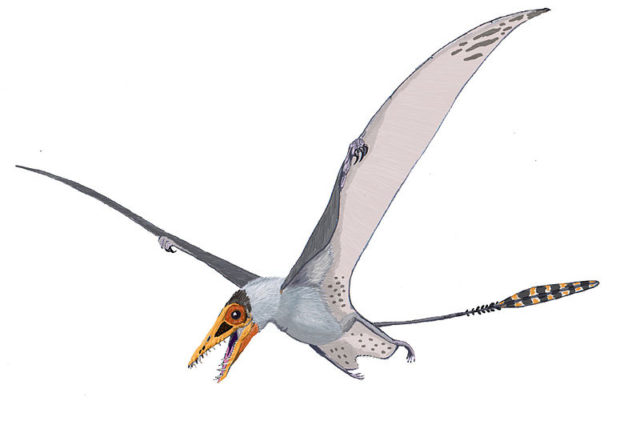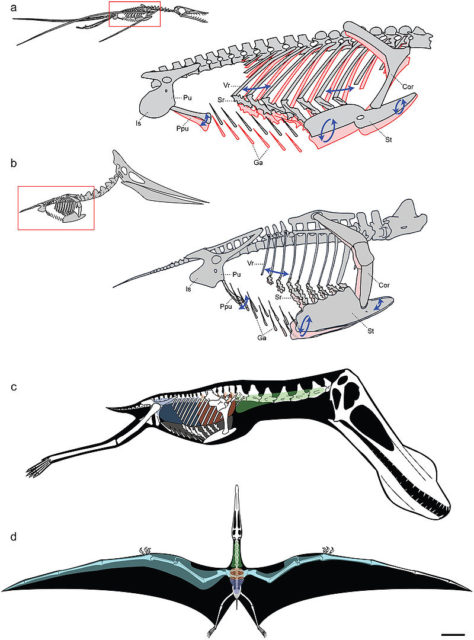Scientists have found a new species of a 200 million-year-old pterosaur from the Patagonia region of South America. Remarkably, the flying reptile’s neurocranium (the upper-back part of its skull) was very well preserved, giving scientists a new perspective on the pterosaur’s brain anatomy. The researchers have named this new species “Allkauren koi” from the native work Tehuelhe, where “karuen” translates as “ancient”, and “all” as “brain”.

Pterosaurs are an extinct class of flying reptiles that existed for nearly the entire Mesozoic Era. They were exceptionally well adapted to flight, with pneumatic bones to lessen their weight and a lengthened digit supporting the wings.
Only a few examples of the pterosaur’s skull survive, but this new find supplies scientists with important information on the origins and evolution of this extraordinary class of flying reptiles. The skull discovered in this study was only 12 millimeters long, indicating that it was from a smaller species of pterosaur.
Neither bats nor birds, pterosaurs were reptiles that ruled the skies during the Cretaceous and Jurassic periods. Scientists have long debated where the pterosaurs belong on the evolutionary tree. The guiding theory currently is that the pterosaurs, crocodiles, and dinosaurs are closely related and all belong to the group known as archosaurs, but this is yet to be fully confirmed. Pterosaurs evolved into a vast array of different species. Several were as huge as an F-16 fighter jet, and others could be as small as a sparrow.
For the researchers to be able to study the skull’s complex anatomy, they used computed tomography to detect, in 3D, the inner ear and cranial endocast.

“Allkaruen, from the middle lower Jurassic limit, shows an intermediate state in the brain evolution of pterosaurs and their adaptations to the aerial environment,” said Dr. Diego Pol, who is part of the research team. “As a result, this research makes an important contribution to the understanding of the evolution of all of pterosaurs.”
